America’s diverse geography creates exceptional whitewater rafting opportunities, from gentle family floats through scenic canyons to heart-pounding descents through Class V rapids that challenge even experienced rafters. Each river system offers unique characteristics shaped by regional geology, seasonal water patterns, and surrounding landscapes to create distinct paddling experiences.
The combination of natural beauty, adrenaline-pumping action, and accessible adventure makes whitewater rafting one of the most popular outdoor activities for both locals and visitors. Understanding river classifications and seasonal variations helps rafters choose appropriate adventures while ensuring safety and maximum enjoyment on the water.
Here is a list of 20 rivers ideal for whitewater rafting across different skill levels and geographic regions.
Colorado River (Grand Canyon)
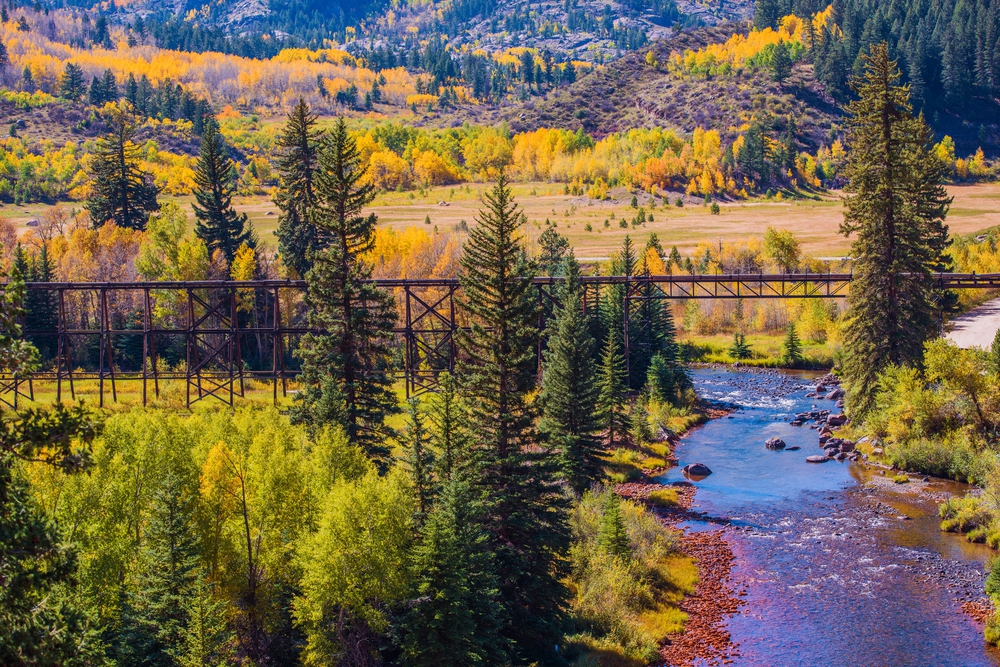
The Colorado River through Grand Canyon National Park offers the ultimate multi-day rafting experience, combining Class I-V rapids with some of America’s most spectacular scenery. Commercial trips range from three to eighteen days, while private permits require years of planning due to overwhelming demand.
The river drops 2,000 feet over 280 miles, creating over 160 named rapids, including the legendary Lava Falls and Crystal Rapids. Side canyon hikes, ancient ruins, and geological wonders provide non-rafting activities during longer expeditions.
Gauley River

West Virginia’s Gauley River delivers some of the East Coast’s most intense whitewater during fall release seasons, when upstream dams discharge water for recreational purposes. The Upper Gauley features continuous Class IV-V rapids over 28 miles, while the Lower Gauley provides slightly more manageable Class III-IV runs suitable for intermediate rafters.
Sweet’s Falls, Insignificant Rapids (ironically named), and Pure Screaming Hell live up to their intimidating names with technical drops and powerful hydraulics. Peak season runs from September through October, when colorful fall foliage enhances the already spectacular scenery.
Like Travel Pug’s content? Follow us on MSN.
Middle Fork Salmon River

Idaho’s Middle Fork combines wilderness solitude with outstanding whitewater through the Frank Church River of No Return Wilderness, America’s largest wilderness area outside Alaska. The 100-mile journey requires five to six days, passing through a roadless wilderness where wildlife viewing includes elk, bighorn sheep, black bears, and mountain goats.
Class III-IV rapids provide consistent excitement without overwhelming technical difficulty, making this trip accessible to adventurous beginners with proper outfitters. Natural hot springs along the riverbank offer perfect evening relaxation after days of paddling and camping.
Arkansas River

Colorado’s Arkansas River flows through multiple distinct sections, from gentle family floats near Salida to the advanced Class V rapids of the Royal Gorge. The Numbers section provides intense Class IV-V whitewater for expert rafters, while Browns Canyon offers more manageable Class III rapids with spectacular Rocky Mountain scenery.
Commercial outfitters operate throughout the season, though spring snowmelt creates the highest water levels and most challenging conditions. The variety of difficulty levels means that Arkansas accommodates everyone from first-time rafters to expert paddlers seeking technical challenges.
New River
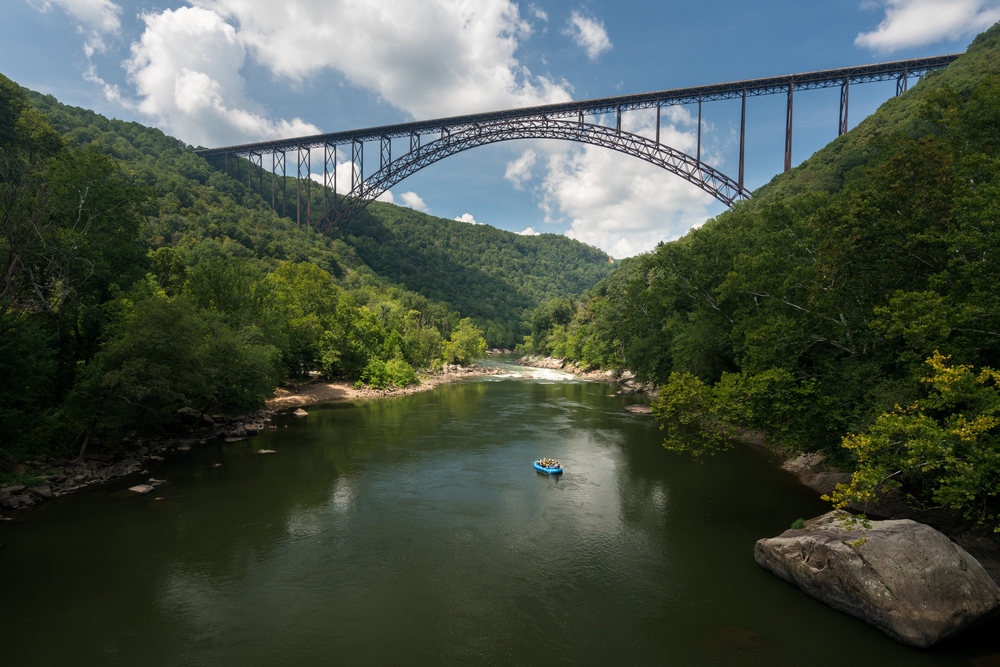
Despite its name, West Virginia’s New River is actually one of the world’s oldest waterways, carving dramatic gorges through ancient Appalachian rock formations. The river offers consistent Class III-V rapids year-round, with the Lower New featuring the famous Double Z and Greyhound Bus Stopper rapids.
The New River Gorge provides stunning scenery enhanced by the iconic New River Gorge Bridge, one of America’s highest vehicular bridges. Multiple outfitters operate from nearby towns, making this accessible to rafters throughout the extended season from April through October.
Like Travel Pug’s content? Follow us on MSN.
Tuolumne River

California’s Tuolumne River provides Sierra Nevada whitewater through granite gorges and pristine wilderness areas with Class III-V rapids, depending on the specific section. The Main Tuolumne features technical Class IV-V drops, including Clavey Falls and Hell’s Kitchen, while the lower sections offer more moderate Class III runs.
Spring snowmelt creates peak flows from April through July, though the river remains raftable later in the season with lower but still exciting water levels. The combination of technical whitewater and High Sierra scenery makes this one of California’s premier rafting destinations.
Ocoee River
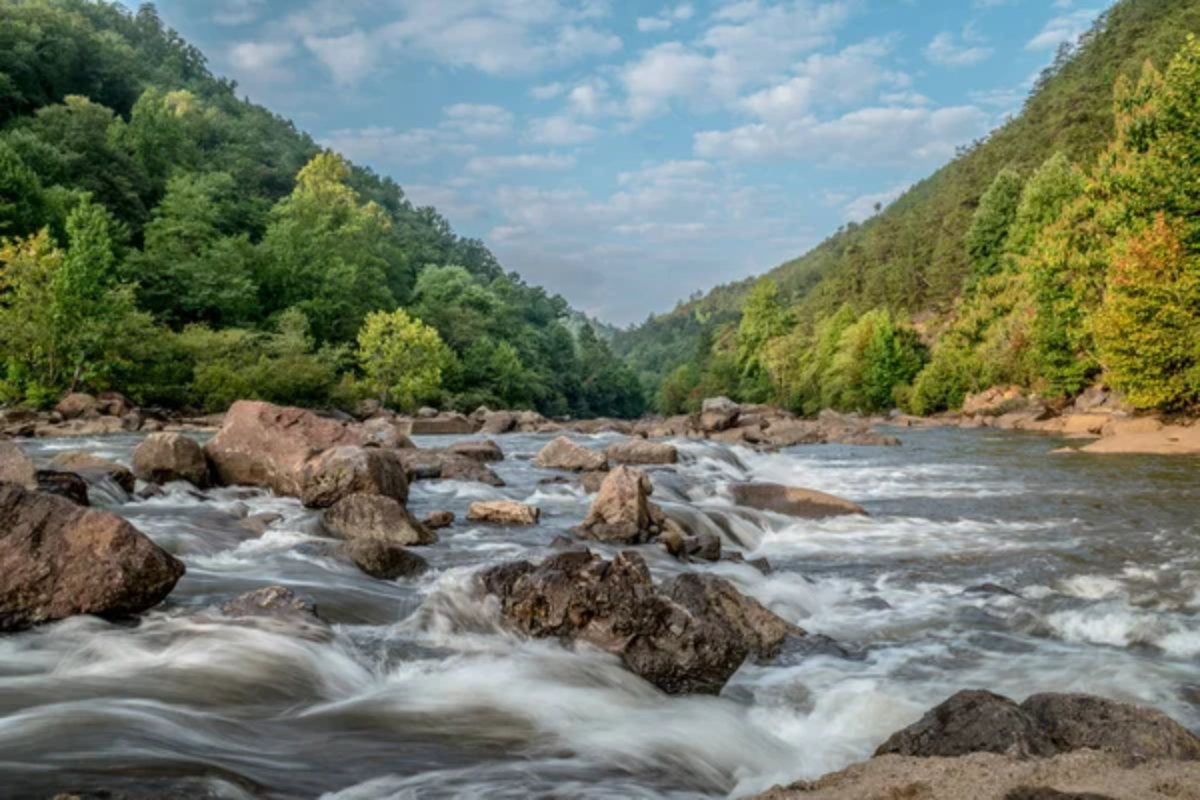
Tennessee’s Ocoee River gained international attention as the site of 1996 Olympic whitewater events, featuring consistent Class III-IV rapids through scenic Cherokee National Forest. The Middle Ocoee provides nearly continuous whitewater over five miles, while the Upper Ocoee offers additional challenges for more experienced rafters.
Dam releases create predictable water levels throughout the rafting season, ensuring consistent conditions from March through October. The relatively short runs make the Ocoee perfect for day trips, though the intensity level remains high throughout the descent.
Chattooga River

Straddling the Georgia-South Carolina border, the wild and scenic Chattooga River offers multiple sections, ranging from gentle Class II floats to the extreme Class IV-V rapids of Section IV. The lower sections gained fame through the movie ‘Deliverance,’ though modern safety practices and professional guides ensure much safer experiences than Hollywood depicted.
Bull Sluice, Sock-em-Dog, and other named rapids provide memorable challenges, while pristine forest surroundings create a true wilderness experience. The river requires permits for private groups, though commercial outfitters handle all logistics for guided trips.
Like Travel Pug’s content? Follow us on MSN.
Rio Grande

The Rio Grande, through Big Bend National Park and surrounding areas, offers unique desert whitewater experiences with Class I-IV rapids depending on water levels and specific sections. Santa Elena Canyon provides spectacular scenery with towering limestone walls rising hundreds of feet above the river, while Mariscal Canyon offers more technical challenges.
Water levels fluctuate significantly based on releases from upstream sources, creating seasonal variations in both difficulty and navigability. The desert environment provides year-round paddling opportunities, though extreme summer temperatures make spring and fall the preferred seasons.
Snake River
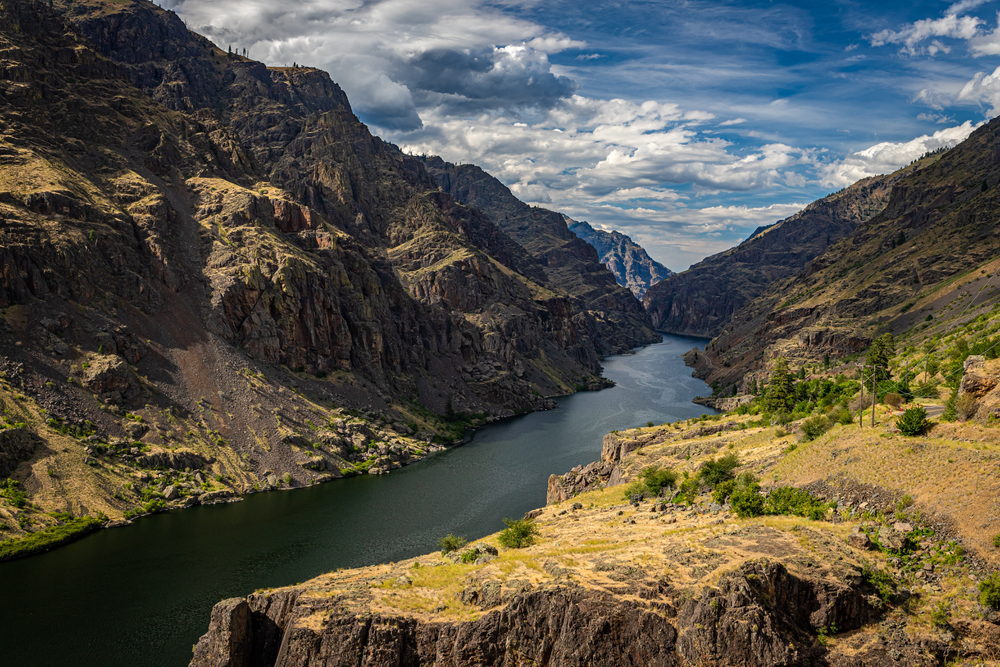
Wyoming’s Snake River through Jackson Hole delivers consistent Class II-III whitewater with unmatched Teton Range scenery, making this one of America’s most scenic rafting experiences. The river features enough rapids to maintain excitement while remaining accessible to families and beginner rafters, with Lunch Counter and Big Kahuna providing the most significant challenges.
Wildlife viewing opportunities include moose, elk, bald eagles, and occasional bears along the riverbanks, while the Teton Mountains provide constant photographic opportunities. Multiple outfitters operate full-day and half-day trips throughout the extended season from May through September.
American River
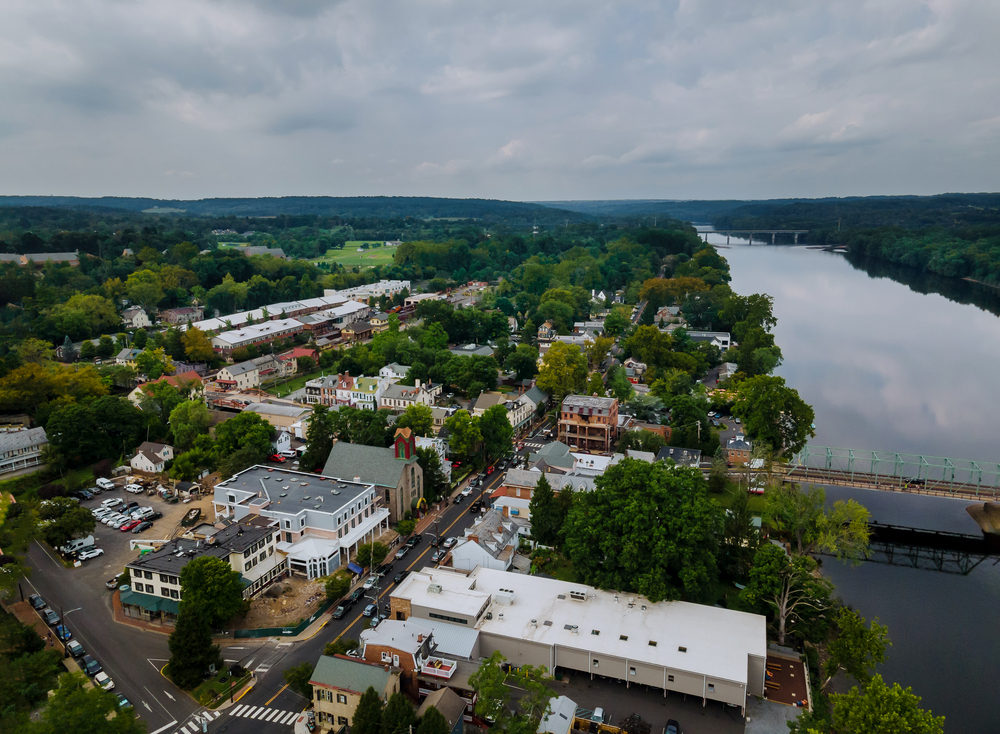
California’s American River system includes multiple forks offering everything from gentle family floats to extreme Class V descents through the Sierra Nevada foothills. The South Fork provides the most popular rafting with consistent Class III rapids, while the Middle Fork delivers Class IV-V challenges for advanced rafters.
The North Fork offers expert-level Class V runs, including the notorious Giant Gap section, with drops exceeding 100 feet per mile. Spring snowmelt creates peak conditions from April through July, though lower sections remain raftable throughout the year with varying difficulty levels.
Like Travel Pug’s content? Follow us on MSN.
Rogue River
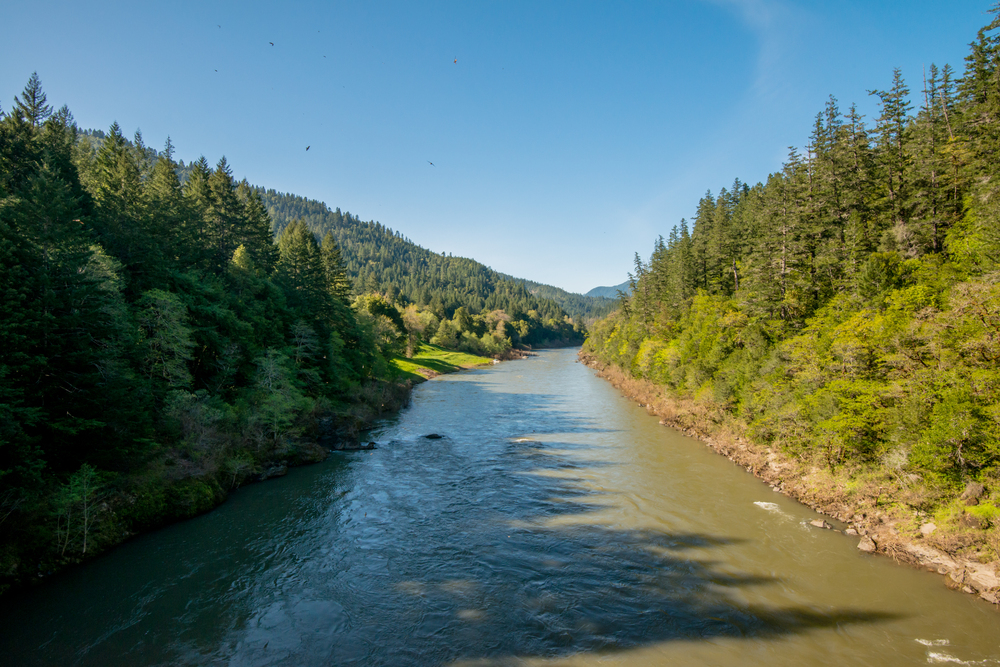
Oregon’s Rogue River combines outstanding whitewater with multi-day wilderness experiences through the Rogue River National Wild and Scenic River corridor. The river features Class III-IV rapids interspersed with calm sections perfect for wildlife viewing and fishing, while dramatic canyon scenery provides constant visual interest.
Multi-day trips include riverside camping and hearty meals prepared by professional guides, creating complete outdoor experiences beyond just the whitewater. The river maintains raftable flows from spring through fall, with jet boat shuttles providing access to remote put-in and take-out points.
Youghiogheny River

Pennsylvania’s ‘Yough’ River offers consistent Class III-IV whitewater through Ohiopyle State Park, featuring the famous Falls section with drops up to 20 feet in height. The Lower Yough provides more manageable Class III rapids suitable for intermediate rafters, while the Upper Yough delivers Class IV-V challenges for experts only.
Natural rock slides and swimming holes provide additional entertainment during warmer months, while fall foliage creates spectacular scenery during autumn rafting seasons. The river’s location within driving distance of major East Coast cities makes it easily accessible for weekend adventures.
Kern River
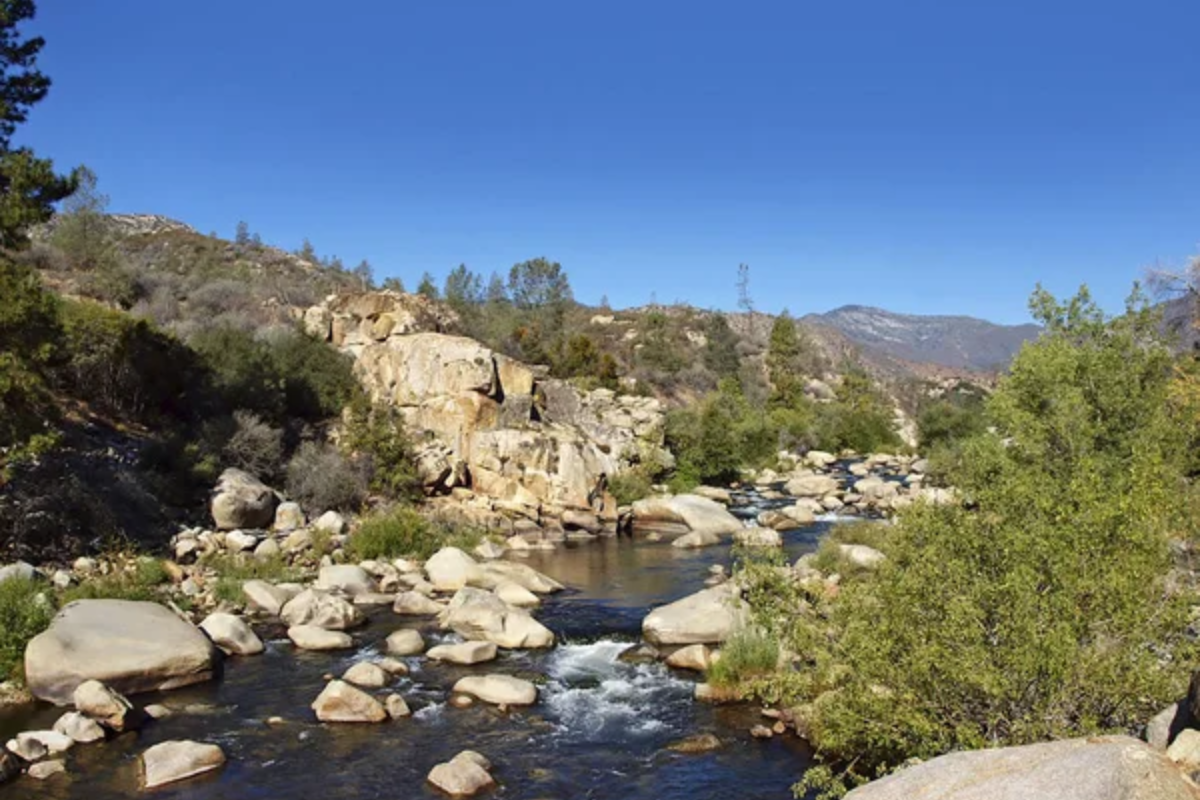
California’s Kern River flows through multiple distinct sections, from gentle family runs in the lower canyon to the extreme Class V rapids of the Upper Kern and Forks of the Kern. The Lower Kern provides consistent Class III rapids with warm water temperatures and extended seasons from April through September.
The Upper Kern features technical Class IV-V drops, including Royal Flush and Bombs Away, that challenge even expert rafters. The Forks of the Kern offers multi-day wilderness experiences with some of California’s most difficult commercially rafted whitewater.
Like Travel Pug’s content? Follow us on MSN.
Lehigh River
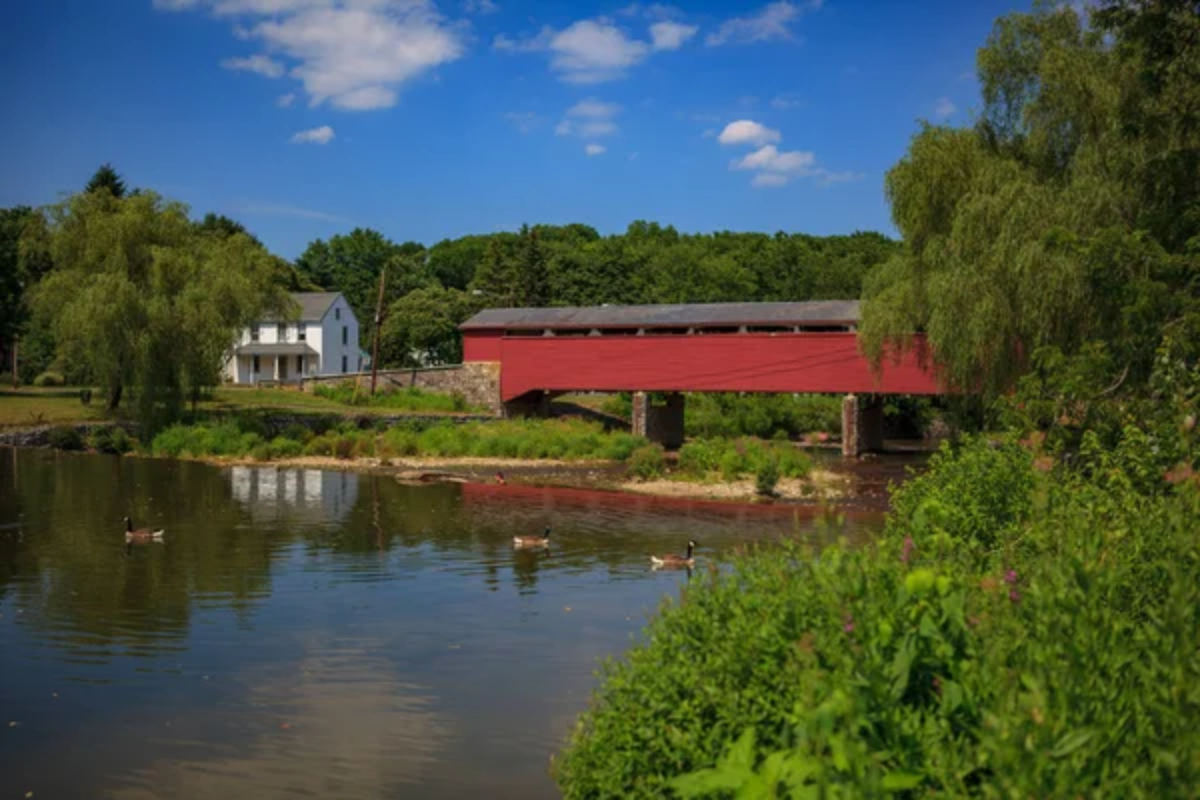
Pennsylvania’s Lehigh River provides reliable Class III whitewater through scenic Pocono Mountains gorges, with dam releases ensuring consistent flows throughout the rafting season. The river features over 20 rapids in a relatively short section, creating nearly continuous action from put-in to take-out points.
Fall foliage season provides spectacular scenery enhancements, while the river’s location makes it easily accessible from New York and Philadelphia metropolitan areas. Commercial outfitters operate throughout the season with professional guides ensuring safety on technical rapids like Laurel Glen and Double Drop.
Penobscot River
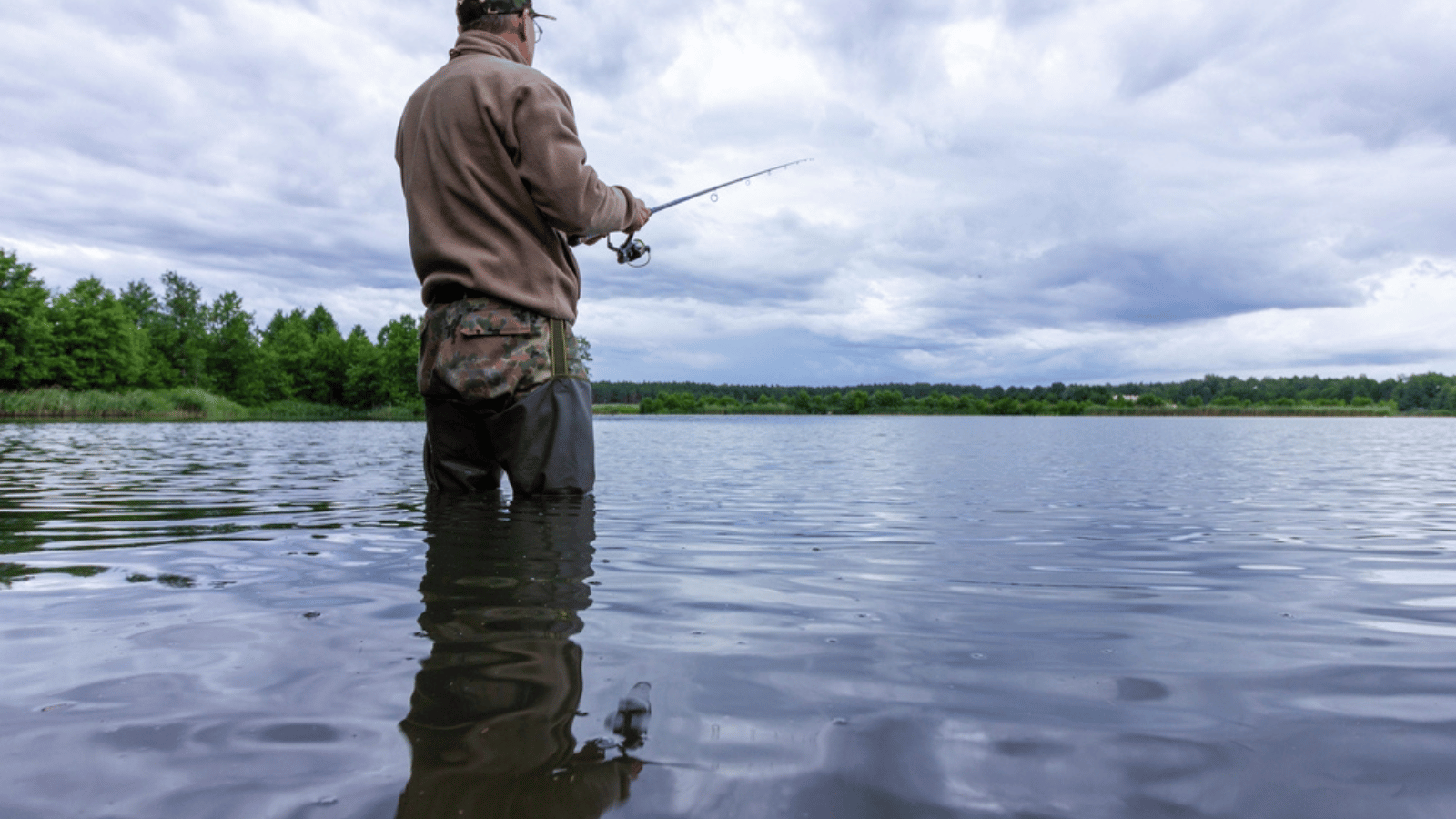
Maine’s Penobscot River offers unique New England whitewater through pristine forests with Class III-V rapids depending on the specific section and water levels. The river features several distinct runs, from the more manageable Millinocket section to the extreme Class V drops of the Nesowadnehunk Deadwater section.
Recent dam removals have restored natural flow patterns and created new whitewater opportunities while improving fish habitat throughout the system. The combination of technical rapids and Maine wilderness creates distinctive East Coast rafting experiences.
Salt River
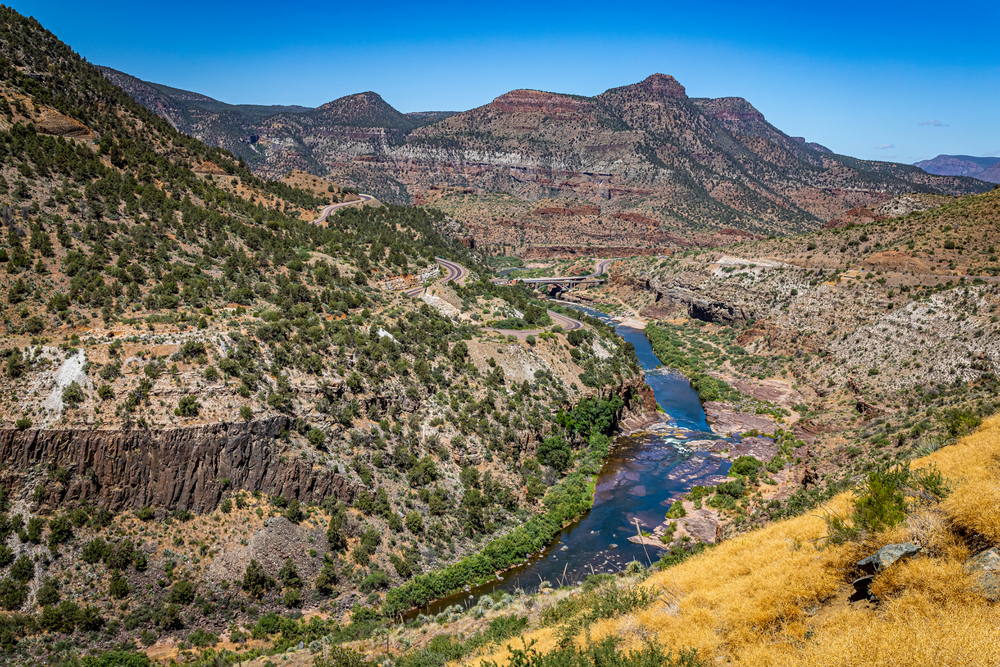
Arizona’s Salt River provides desert whitewater experiences with Class III-IV rapids through stunning Sonoran Desert landscapes filled with saguaro cacti and diverse wildlife. The river flows year-round thanks to upstream reservoirs, though spring provides the highest water levels and most exciting rapids.
Tonto National Forest surroundings create dramatic canyon scenery, while mild winter temperatures allow comfortable rafting when other regions remain frozen. Wild horses occasionally appear along the riverbanks, adding unexpected wildlife viewing to the desert paddling experience.
Like Travel Pug’s content? Follow us on MSN.
Clear Creek
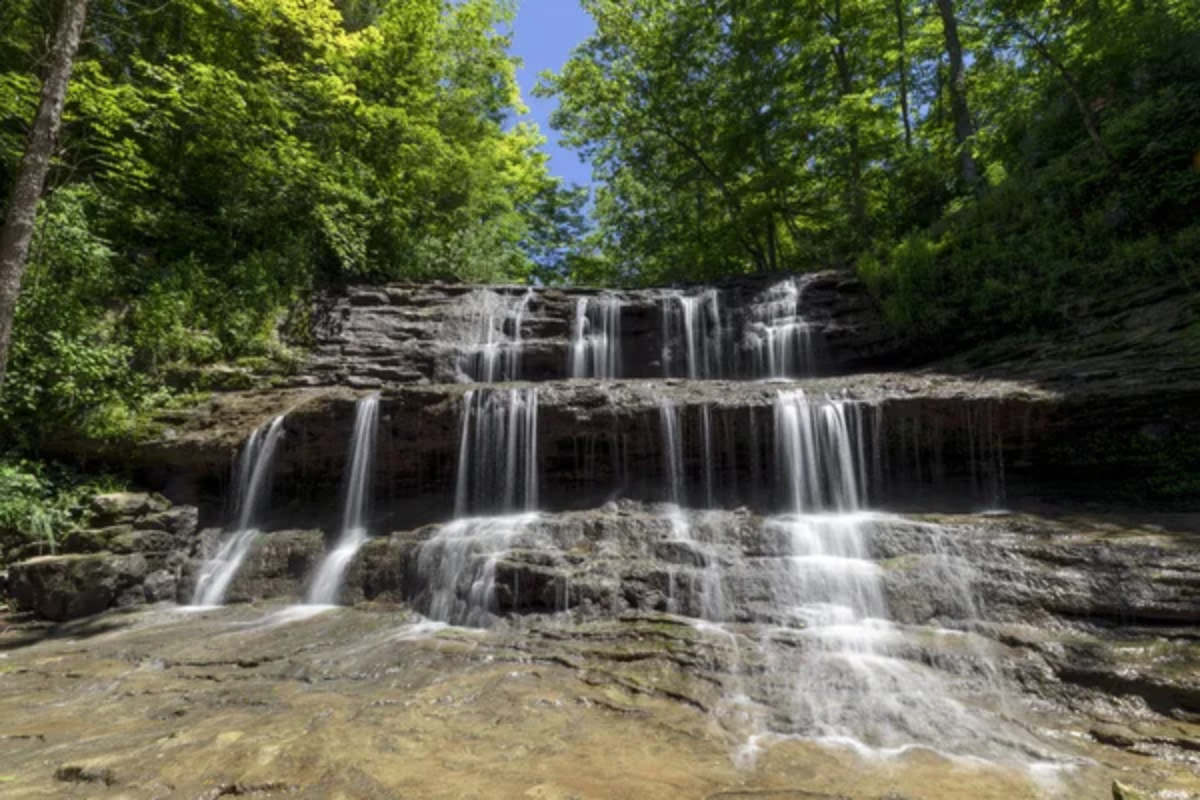
Colorado’s Clear Creek offers easily accessible whitewater near Denver, featuring Class III-V rapids through scenic mountain canyons with multiple put-in and take-out options. The creek provides reliable flows from snowmelt throughout spring and early summer, while its proximity to major population centers makes it popular for after-work paddling sessions.
Technical rapids require solid intermediate to advanced skills, though commercial outfitters provide guided trips for less experienced rafters. The creek’s location along Highway 6 allows roadside scouting of major rapids before committing to runs.
Deschutes River
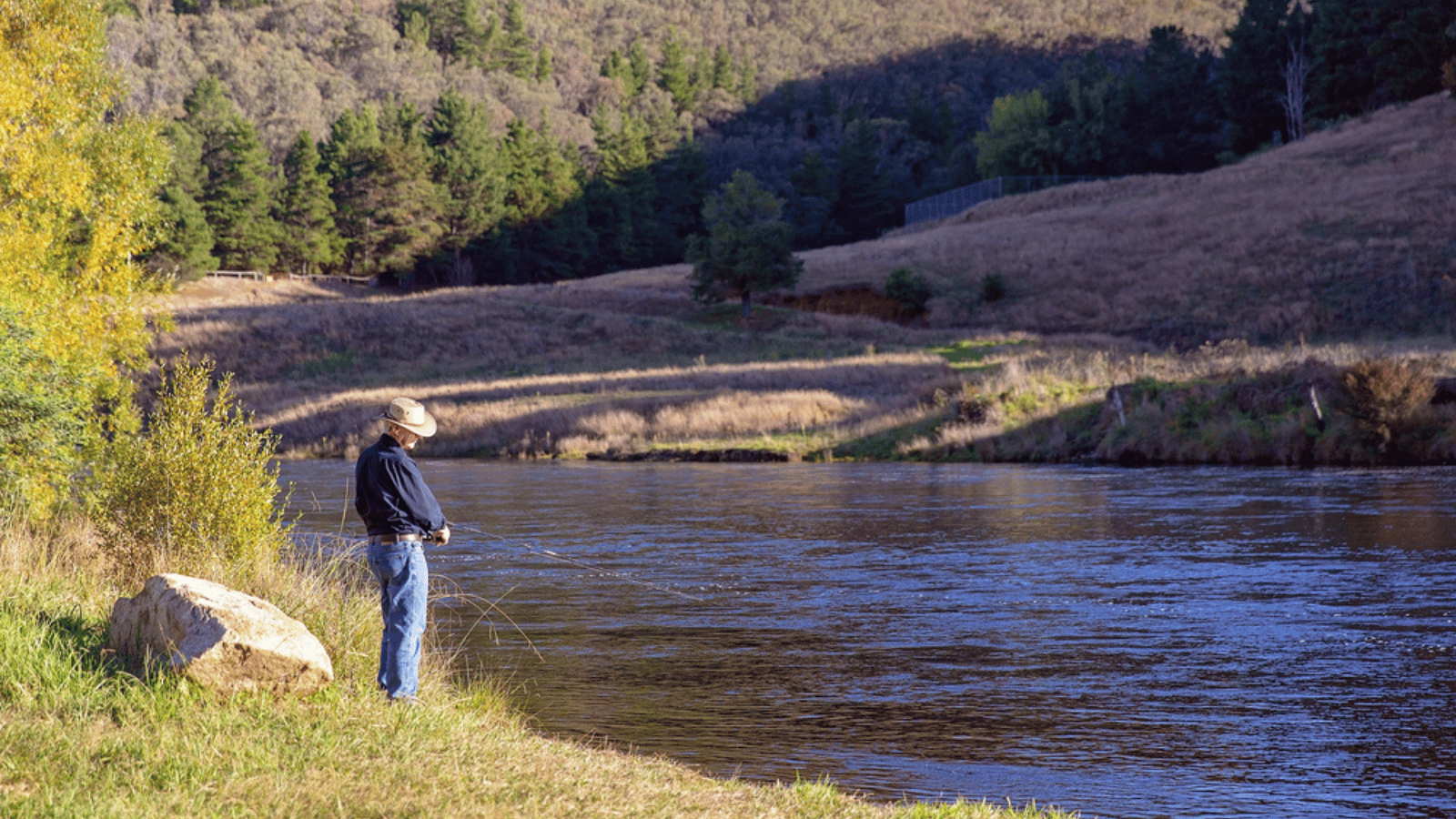
Oregon’s Deschutes River combines consistent whitewater with outstanding scenery through high desert canyons filled with unique geological formations and diverse wildlife. The river features Class III-IV rapids interspersed with calm sections perfect for fishing world-class steelhead and salmon runs.
Multi-day trips include riverside camping and opportunities to explore side canyons and Native American pictographs throughout the journey. The river maintains flows year-round, though spring and fall provide optimal conditions with comfortable temperatures and reliable water levels.
French Broad River
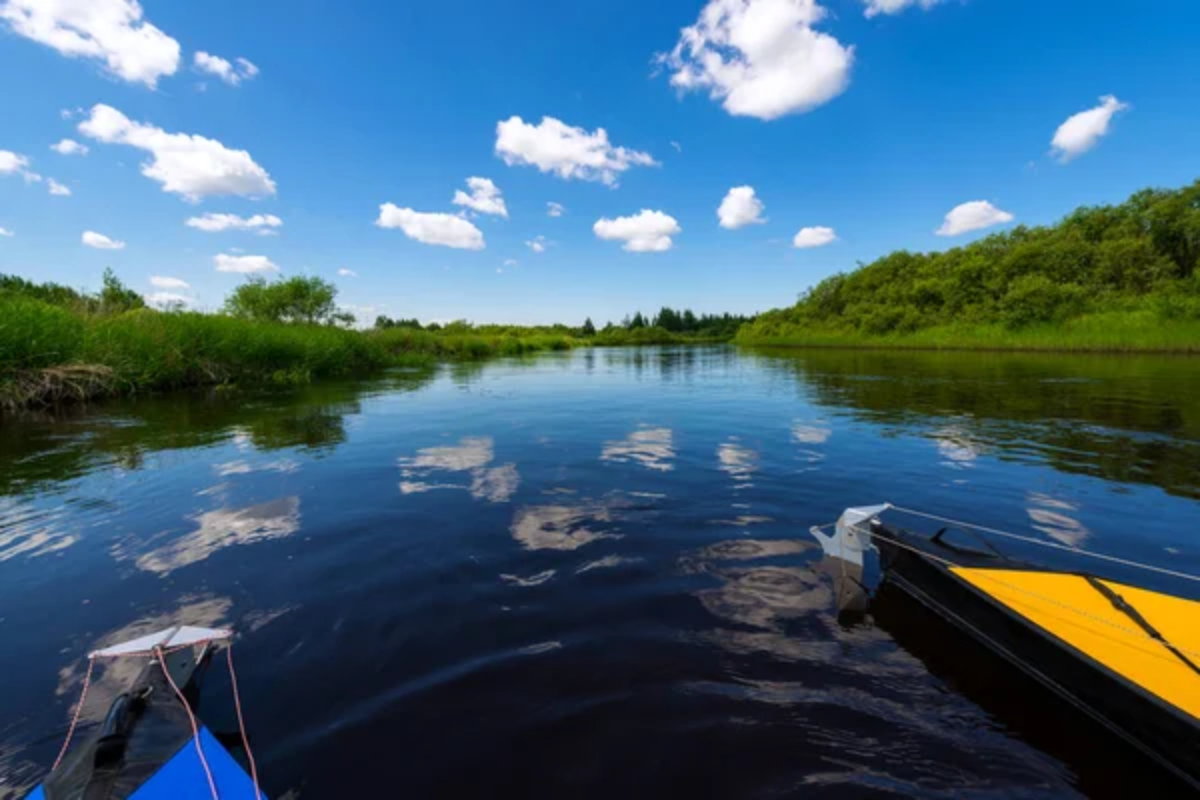
North Carolina’s French Broad River offers Appalachian whitewater experiences through the Blue Ridge Mountains with Class II-IV rapids suitable for various skill levels. The river features several distinct sections, from gentle family floats near Asheville to more challenging runs through mountain gorges upstream.
Consistent flows throughout most of the year allow extended rafting seasons, while the river’s rich history includes significance to Cherokee culture and early European settlement. Commercial outfitters provide equipment and guides, while the river’s accessibility makes it popular for both day trips and extended adventures.
Like Travel Pug’s content? Follow us on MSN.
Flowing Through Adventure
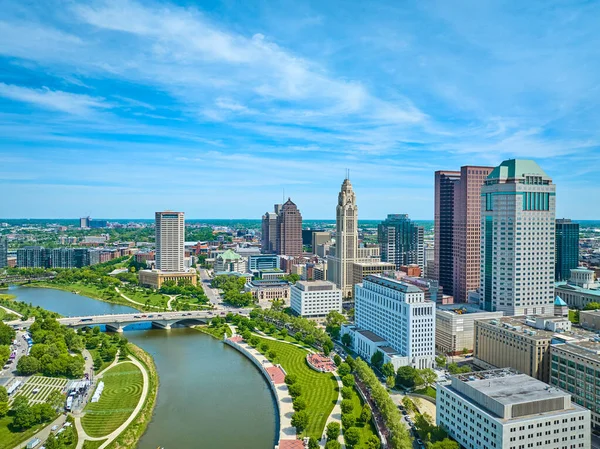
These twenty rivers represent America’s incredible diversity of whitewater experiences, from multi-day wilderness expeditions through remote canyons to accessible day trips near major cities. Each river system offers unique combinations of technical challenges, scenic beauty, and cultural significance that create lasting memories for participants.
The growth of professional guiding services and improved safety equipment has made whitewater rafting more accessible while maintaining the authentic adventure that draws people to these powerful waterways. Whether seeking gentle family fun or extreme technical challenges, America’s rivers provide whitewater experiences that match every skill level and adventure preference, ensuring that the ancient human attraction to flowing water continues inspiring new generations of river runners.
More from Travel Pug

- 20 Best Beach Towns in the Carolinas
- 13 Destinations Where Tourists Regularly Regret Their Trip
- 20 Destinations That Are More Magical Without an Itinerary
- 20 Underrated Adventures That Belong on Your Travel List
- 20 Cities Where You Should Just Wing It, No Planning Required
Like Travel Pug’s content? Follow us on MSN. on MSN.
